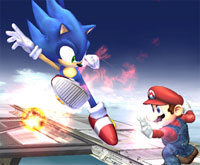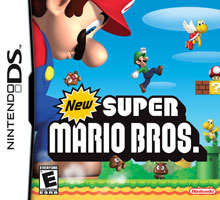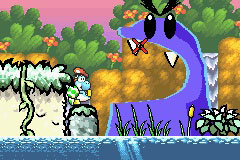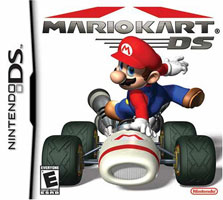
So Solid Snake isn’t the only non-Nintendo character to make it into Smash Bros Brawl, as Nintendo has announced that Sonic will be pitting himself in mortal combat against Mario for the first time. Now we know how Sega got permission to put Mario into its Olympic game, then.
I was very indifferent towards Smash Bros Melee, probably because it came out at the same time as I was getting into Street Fighter III: Third Strike’s home debut on Dreamcast and, let’s face it, in a battle of fighting mechanics only one of those is going to come out on top. It was an enjoyable little fanwank but I find myself constantly baffled by lists putting it up there as one of the best games of all time. It’s not. Seriously, it’s not. It’s not even close to being the best game on GameCube, and that’s saying something.
As such, my anticipation for Brawl was almost nil. I still need to buy Metroid Prime 3, and that gets the nod over Smash Bros for having a proper single player experience in there. But this has changed things entirely. The original Smash Bros may have been wish fulfilment for a lot of people who grew up with Nintendo, but in making a fighting game with Mario and Sonic, Nintendo have gone and created my most wanted game from about 1993. Seriously, if I’d told 8-year-old self about this game my little head would have exploded.
So what are the odds on Snake slitting Sonic’s throat for that awful next-gen abortion? Don’t go all family friendly on us, Nintendo.



